Jeep Avenger vs SEAT Leon – Differences & prices compared
Everyday use, family trips or long-distance drives – here’s where the differences show.
Discover whether Jeep Avenger or SEAT Leon fits your lifestyle better.
Costs and Efficiency:
When it comes to price and running costs, the biggest differences usually appear. This is often where you see which car fits your budget better in the long run.
Jeep Avenger has a somewhat advantage in terms of price – it starts at 21900 £, while the SEAT Leon costs 24500 £. That’s a price difference of around 2512 £.
Fuel consumption also shows a difference: SEAT Leon manages with 0.30 L and is therefore decisively more efficient than the Jeep Avenger with 4.90 L. The difference is about 4.60 L per 100 km.
As for range, the Jeep Avenger performs decisively better – achieving up to 400 km, about 266 km more than the SEAT Leon.
Engine and Performance:
Under the bonnet, it becomes clear which model is tuned for sportiness and which one takes the lead when you hit the accelerator.
When it comes to engine power, the SEAT Leon has a significantly edge – offering 272 HP compared to 156 HP. That’s roughly 116 HP more horsepower.
In acceleration from 0 to 100 km/h, the SEAT Leon is somewhat quicker – completing the sprint in 7.70 s, while the Jeep Avenger takes 9 s. That’s about 1.30 s faster.
In terms of top speed, the SEAT Leon performs slightly better – reaching 220 km/h, while the Jeep Avenger tops out at 194 km/h. The difference is around 26 km/h.
There’s also a difference in torque: SEAT Leon pulls distinct stronger with 360 Nm compared to 260 Nm. That’s about 100 Nm difference.
Space and Everyday Use:
Cabin size, boot volume and payload all play a role in everyday practicality. Here, comfort and flexibility make the difference.
Both vehicles offer seating for 5 people.
In curb weight, Jeep Avenger is somewhat lighter – 1180 kg compared to 1344 kg. The difference is around 164 kg.
Boot capacity is identical – both offer 380 L of storage.
In maximum load capacity, the SEAT Leon performs barely noticeable better – up to 1301 L, which is about 24 L more than the Jeep Avenger.
When it comes to payload, SEAT Leon slight takes the win – 521 kg compared to 502 kg. That’s a difference of about 19 kg.
Who wins the race?
The SEAT Leon proves to be is largely superior and therefore becomes our DriveDuel Champion!
SEAT Leon is the better all-rounder in this comparison.
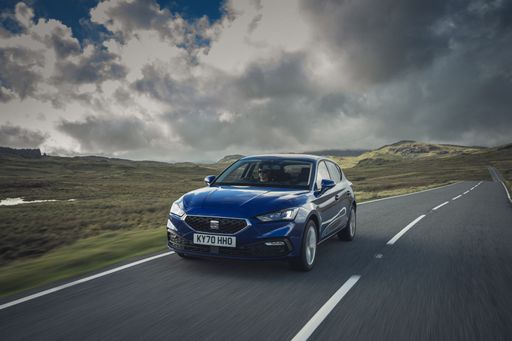
SEAT Leon
Jeep Avenger
The Jeep Avenger is a compact SUV that brings a blend of rugged design and modern technology, making it ideal for both urban and off-road adventures. Its robust build and distinctive styling capture Jeep's iconic spirit while offering a comfortable and refined driving experience. With advanced safety features and a versatile interior, the Avenger caters to a wide range of drivers looking for practicality and excitement.
details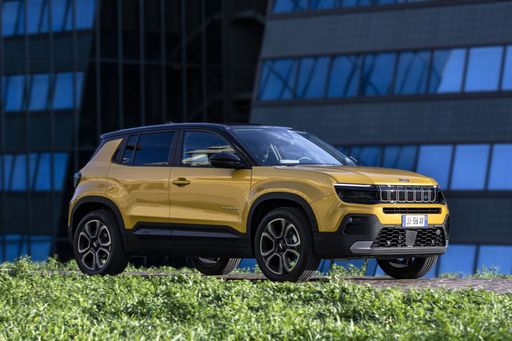 @ Stellantis
@ Stellantis
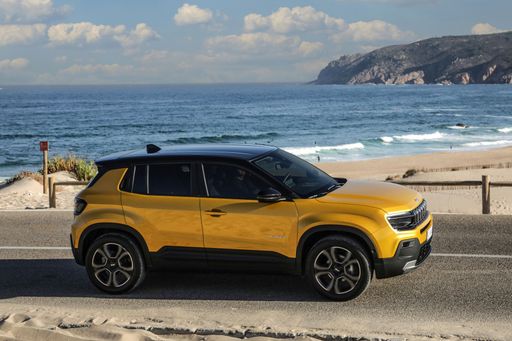 @ Stellantis
@ Stellantis
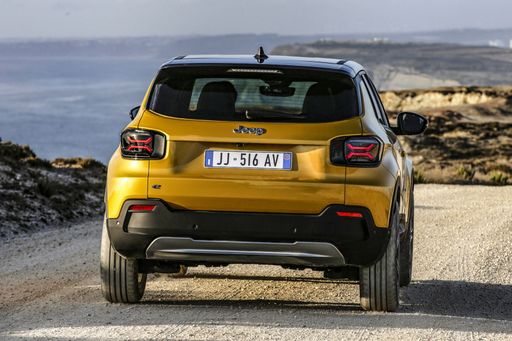 @ Stellantis
@ Stellantis
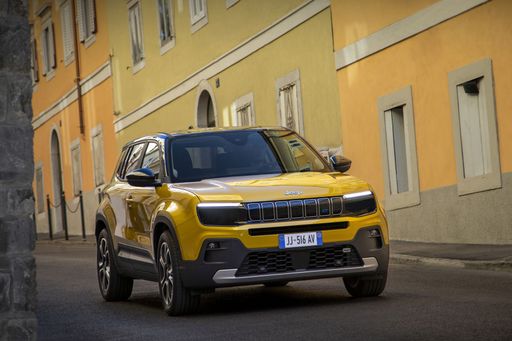 @ Stellantis
@ Stellantis
 @ Stellantis
@ Stellantis
SEAT Leon
The SEAT Leon impresses with its dynamic design and sporty edge, making it a standout choice in its class. Its interior is characterised by a modern, driver-focused cockpit that combines functionality with an emphasis on comfort. The car delivers a responsive driving experience, thanks to its advanced engineering and agile handling capabilities.
details @ seatmedia
@ seatmedia
 @ seatmedia
@ seatmedia
 @ seatmedia
@ seatmedia
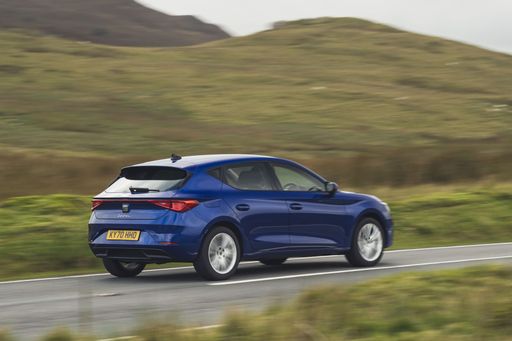 @ seatmedia
@ seatmedia

|

|
|
|
|
Costs and Consumption |
|
|---|---|
|
Price
21900 - 36900 £
|
Price
24500 - 36400 £
|
|
Consumption L/100km
4.9 - 5.7 L
|
Consumption L/100km
0.3 - 5.7 L
|
|
Consumption kWh/100km
15.50 kWh
|
Consumption kWh/100km
-
|
|
Electric Range
400 km
|
Electric Range
133 - 134 km
|
|
Battery Capacity
51 kWh
|
Battery Capacity
19.70 kWh
|
|
co2
0 - 129 g/km
|
co2
7 - 129 g/km
|
|
Fuel tank capacity
44 L
|
Fuel tank capacity
40 - 45 L
|
Dimensions and Body |
|
|---|---|
|
Body Type
SUV
|
Body Type
Hatchback
|
|
Seats
5
|
Seats
5
|
|
Doors
5
|
Doors
5
|
|
Curb weight
1180 - 1520 kg
|
Curb weight
1344 - 1670 kg
|
|
Trunk capacity
325 - 380 L
|
Trunk capacity
270 - 380 L
|
|
Length
4084 - 4088 mm
|
Length
4368 mm
|
|
Width
1776 mm
|
Width
1799 mm
|
|
Height
1527 - 1541 mm
|
Height
1442 - 1460 mm
|
|
Max trunk capacity
1218 - 1277 L
|
Max trunk capacity
1187 - 1301 L
|
|
Payload
494 - 502 kg
|
Payload
460 - 521 kg
|
Engine and Performance |
|
|---|---|
|
Engine Type
Electric, Petrol, Petrol MHEV
|
Engine Type
Petrol, Petrol MHEV, Diesel, Plugin Hybrid
|
|
Transmission
Automatic, Manuel
|
Transmission
Manuel, Automatic
|
|
Transmission Detail
Reduction Gearbox, Manual Gearbox, Dual-Clutch Automatic
|
Transmission Detail
Manual Gearbox, Dual-Clutch Automatic
|
|
Drive Type
Front-Wheel Drive, All-Wheel Drive
|
Drive Type
Front-Wheel Drive
|
|
Power HP
100 - 156 HP
|
Power HP
110 - 272 HP
|
|
Acceleration 0-100km/h
9 - 10.6 s
|
Acceleration 0-100km/h
7.7 - 10.5 s
|
|
Max Speed
150 - 194 km/h
|
Max Speed
197 - 220 km/h
|
|
Torque
205 - 260 Nm
|
Torque
220 - 360 Nm
|
|
Number of Cylinders
3
|
Number of Cylinders
4
|
|
Power kW
74 - 115 kW
|
Power kW
85 - 200 kW
|
|
Engine capacity
1199 cm3
|
Engine capacity
1498 - 1968 cm3
|
General |
|
|---|---|
|
Model Year
2023 - 2025
|
Model Year
2024 - 2025
|
|
CO2 Efficiency Class
A, D, C
|
CO2 Efficiency Class
D, B
|
|
Brand
Jeep
|
Brand
SEAT
|
What drivetrain options does the Jeep Avenger have?
Available configurations include Front-Wheel Drive or All-Wheel Drive.
The prices and data displayed are estimates based on German list prices and may vary by country. This information is not legally binding.
